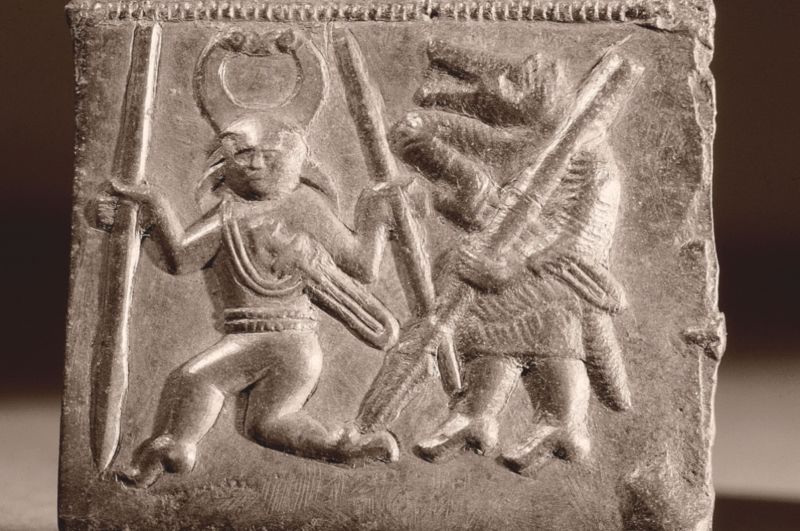Viking berserkers may have used henbane to induce trance-like state

Enlarge / Sixth century Viking matrix used in the manufacture of helmet plaques, depicting Odin accompanied by a Berserker. (credit: Werner Forman/Universal Images Group/Getty Images)
The legendary Viking warriors known as berserkers were renowned for their ferocity in battle, purportedly fighting in a trance-like state of blind rage (berserkergang), howling like wild animals, biting their shields, and often unable to distinguish between friend and foe in the heat of battle. But historians know very little about the berserkers apart from scattered Old Norse myths and epic sagas. One intriguing hypothesis as to the source of their behavior is that the berserkers ingested a specific kind of mushroom with psychoactive properties. Now an ethnobotanist is challenging that hypothesis, suggesting in a recent paper in the Journal of Ethnopharmacology that henbane is a more likely candidate.
Accounts of the berserkers date back to a late ninth-century poem to honor King Harald Fairhair. The 13th-century Icelandic historian/poet Snorri Sturluson described Odin's berserkers as being "mad as dogs or wolves" and "strong as bears or wild oxen," killing people with a single blow. Specific attributes can vary widely among the accounts, often veering into magic or mysticism. There are claims that berserkers were not affected by edged weapons or fire, but they could be killed with clubs. Other claims say they could blunt the blades of their enemies with spells or just by giving them the evil eye. Most accounts at least agree on the primary defining characteristic: a blind ferocious rage.
The onset of berserkergang purportedly began with bodily chills, shivering, and teeth chattering, followed by swelling and reddening of the face. Then the rage broke out, and once it abated, the berserker would experience both physical fatigue and emotional numbness for a few days. Several hypotheses have been proposed for why the warriors would have behaved this way, including self-induced hysteria-aided by biting their shields and howling-epilepsy, ergot poisoning, or mental illness. One of the more hotly contested hypotheses is that the berserkers ingested a hallucinogenic mushroom (Amanita muscaria), commonly known as fly agaric, just before battle to induce their trance-like state.
Read 8 remaining paragraphs | Comments